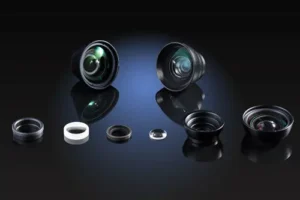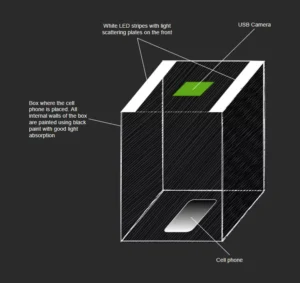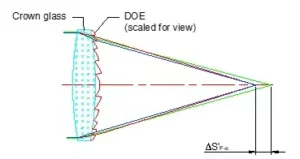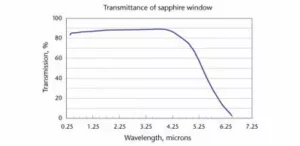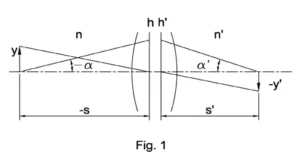We will delve in more detail here on the types of questions we ask our customers when starting a custom spectrometer design program and the various stages of development.
Some recent spectrophotometer development tasks included:
- Miniaturize a current lab prototype
- Automate an existing instrument
- Improve or redesign an existing spectrophotometer
- Increase the range of samples tested
- Add image capturing to an existing setup
- Provide electronics and software design
These programs may include design optimization, improvement of a proven concept prototype, or development of a completely new concept. We work then to design and manufacture the optical and electronic parts, develop the firmware and software for data processing, manufacture optical and mechanical custom components, and assemble the desired number of working prototypes.
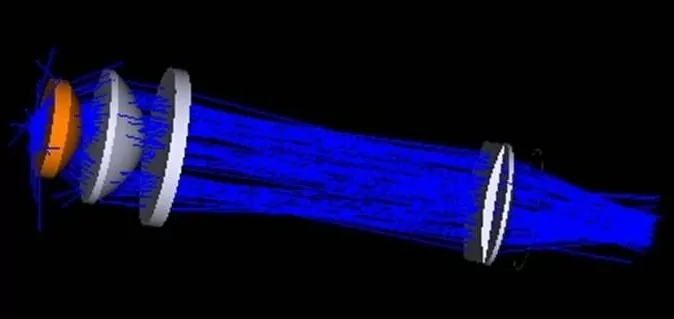
Zemax model of a spectrophotometer Illumination system using cylindrical lenses
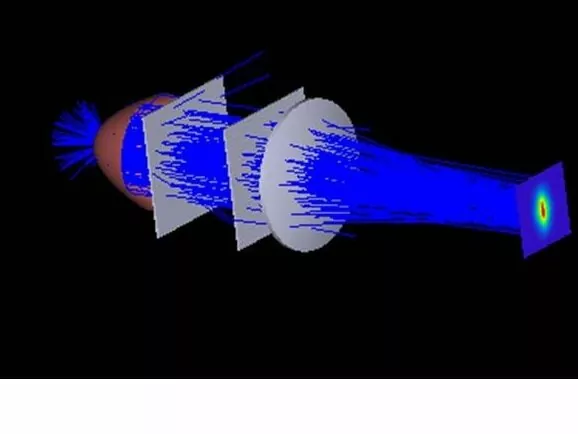
Zemax model of illumination system with a lenticular lens arrays for uniform slit illumination
Depending on the stages of development, certain components may have been previously determined or may require development
Common Spectrophotometer Components
- Illumination system type
- Light acquisition system type
- Fiber collimator
- Cylindrical lens
- Diffraction grating
- Aspherical mirror
- Image sensor/ Camera
- Display screen
- Secondary optical channel with lens and detector

A Czerny-Turner scheme layout of a monochromator, a critical spectrophotometer component that separates a band of light based on refraction with a prism or diffraction (grating)
Given the defined components, we review with our client the key performance and system construction details.
Key Parameters
- Size of system
- Size of area analyzed
- Working distance
- Minimum and maximum exposure time
- Point of incident light
- Incident and excident light axis polar and altitude angle
- Beam shaping and positioning
- Operating wavelength range
- FOV
- Magnification
- Focus range
- Shutter speed
- Resolution
- Signal to noise ratio
- Transmission considerations
- Polarization considerations
- Scattering considerations
- Distortion considerations
- Electronic board power supply range
Requirements about sensitivity, working wavelengths, and environmental conditions for the spectrophotometer can be defined during a feasibility study if unknown at the start.
Some customers may have additional requirements to meet aesthetics and ergonomic concerns. This typically happens once proof of concept is established and the project moves to the next phase of development. In the second stage, we:
- Address any thermal, environmental constraints
- Optimize the optical system for production volume
- Update the optical elements and their placement
- Prepare technical documentation and testing criteria
Launching a custom spectrophotometer design
Spectrophotometers are indispensable analytical tools used in various fields, including biology, chemistry, medical imaging, and industrial quality control. They detect and quantify substances in solutions by analyzing their interaction with light. Spectrophotometers come in single and dual-beam models, with double beam splitters offering more stability and precision, making them ideal for quality control labs. Single beam systems are more cost-effective and suitable for simpler applications.
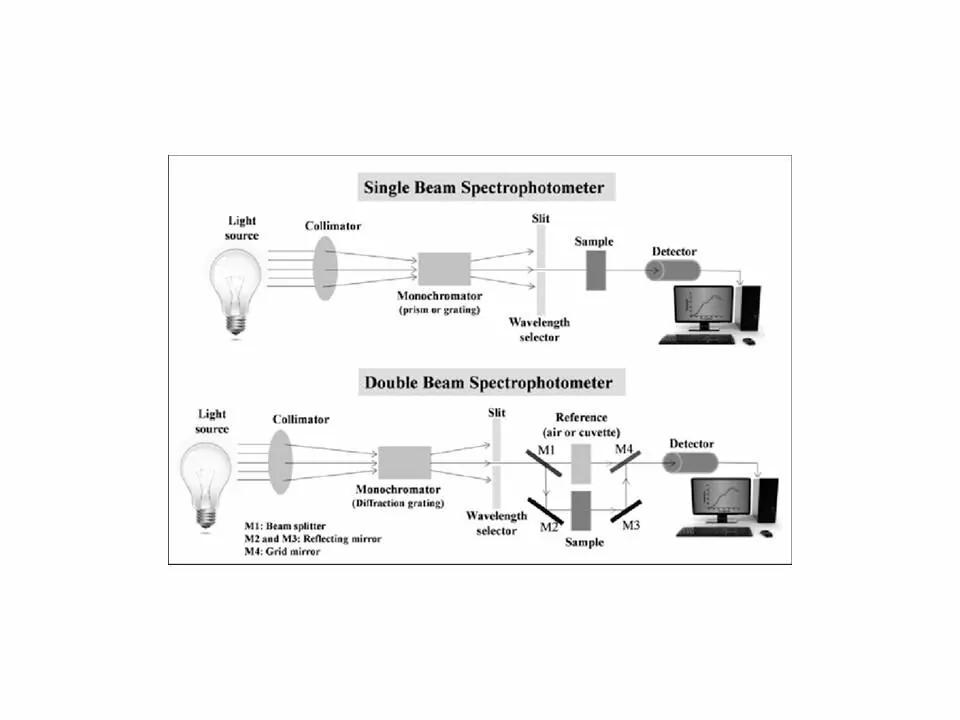
They rely on the tested material’s spectral properties and its interaction with light. Some measure light reflected or transmitted through a sample while others measure light scattered through a sample. Fluorescence spectrophotometers measure light emitted from a sample. A light source is focused on a sample. The reflected or transmitted light is then focused on an optical diffraction grating to disperse the light, and then focused onto light detectors (CCD detector) that measure different wavelengths intensity. The read out is then relayed to a computer generating the detected light spectrum.
Single beam spectrophotometers measure the difference between the input and output light intensity. Their design is simpler as there are few moving parts and the optics is simple, and are useful for determining in solution matter concentration. Double beam spectrophotometers are faster, more stable, and are a better option in QC labs.
They measure a reference standard in addition to the sample, thus generating a ratio of light intensities on individual light paths. In this category, you will also find split beam spectrophotometers; these use a beam splitter to simultaneously illuminate reference and sample, reaching two separate detectors. These instruments are used in spectral scans, quantitative nucleic acid analyses, and various clinical tests.
Need assistance designing a custom spectrometer? Learn more about our design services here.
When designing a spectrophotometer, the application and sample nature will determine the specifications needed. If stability and precision are needed, double beam splitters would be more appropriate, while cost effectiveness is a primary advantage of single beam spectrophotometers. The nature of the material in question will determine the wavelength and hence light source to be used.
In brief, the following are some questions to consider. What is the density and size of the matter to measure? What is your target sensitivity? Are you throughput analyzing and therefore need a rapid system? Will you be needing a preconfigured or custom data analysis software? What is your budget and will there be associated consumables, such as cuvettes, filters, and replacement light sources?
An experienced team will be able to align their design with your budget, benchtop space, material specs, reliability, reproducibility, and the most up to date raw materials, light sources, and data analysis software for a user friendly interface.
